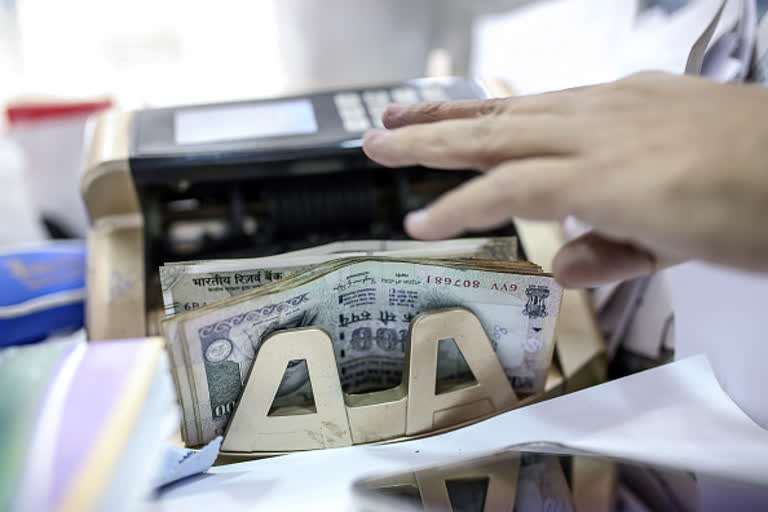RBI vented its concern about the extreme risk aversion of banks, an opinion flowing from credit off take data that could turn out to be self-defeating.
On the other hand, banks justify it on two counts - lack of demand for credit from entrepreneurs and normal prudence in credit risk management.
At this critical point of time, liquidity in the hands of borrowers will be essential to restart the halted units.
More importantly, the economy at bottom of the pyramid is entirely dependent on bank credit are the worst sufferers.
Corporate sector and mighty large business houses can access funds from alternate sources, even from overseas but other business units have limited options except to borrow from banks.
Some of them may desperately seek funds from non-banks and informal sources at a high cost that could eventually turn out to be counterproductive. Hence, banks have to come forward to lend and rescue entrepreneurs.
Role of banks
Despite the constraints of lockdown and looming threat of virus, banks have joined covid warriors by providing uninterrupted basic banking services.
But credit growth, a strategic differentiator came down to 6.9 percent during the period June 21, 2019 and June 19, 2020 as against a corresponding growth of 11.1 percent in previous year.
It further slipped to 5.5 percent by July 31, 2020.
Even the outstanding bank credit marginally went down from Rs.103.2 trillion on March 27, 2020 to Rs102.6 trillion by July 31, 2020 affirming the negative growth during first quarter of 2020-21 building upon an impression of indifference of banks towards credit growth.
This is despite proactive support and credit-boosting measures of RBI initiated right from the beginning of the ongoing crisis
The credit off take data is after taking into account the loan disbursements of Rs.82065 crores made to MSMEs as on July 23, 2020 as against sanctions of Rs. 130419 crores under Emergency Credit Line Guarantee Scheme (ECLGS) scheme of government.
Read More: Smell vulnerabilities early to prevent frauds, lend more: RBI Governor Das to banks
Even sporadic efforts of some banks in rolling out special Covid related loan schemes and making disbursements were not significant enough to scale up volumes.
While the challenges of asset quality, fragile capital adequacy, lack of demand from borrowers are understandable but constructive and collaborative efforts are needed to find solutions to these nagging issues to rise to the occasion.
RBI support
Besides permitting moratorium on debt servicing, granting stand still clause in asset classification, it provided ample durable structural liquidity through multiple channels running close to Rs 10 lakh crore to create a compatible ecosystem for banks to lend.
Reduction of reverse repo rate by 155 basis points bringing it down to a low of 3.35 was intended to prompt banks to lend instead of parking funds under reverse repo window.
Even then, banks have placed close to Rs 8 lakh crore in reverse repo further affirming risk aversion.
The steep cut in repo rates by 115 basis points have brought down lending rates that are linked to it and transmission of policy rates is well in progress.
In order to address Covid induced stress of borrowers, RBI is set to roll out ‘Prudential Framework for Resolution of Stressed Assets’.
Kamath Committee is formed to work out basis for providing one time restructuring of loans that are impacted by the adversity of the pandemic.
The success of the proposed framework will largely depend on how inclusive the criteria are.
Way forward
The business as usual approach in emergent situations cannot be effective.
Banks could have articulated a separate ‘Covid Loan policy’ for a limited period empowering line management to initially lend to their existing borrowers beyond sanctioned limits taking cue from ECLGS.
Among the stakeholders meant to revive the economy, there is lack of specific visible covid induced initiatives in banks to reach out to the ailing sectors of the economy even after unlock.1.0 that began to permit some economic activities.
Now that the economy is on the threshold of unlock 4.0 wherein efforts have to be made towards restoring near normalcy in economic activities as soon as possible, more specific support is needed.
Learning to live with the coronavirus is a long battle and everyone has to be part of it.
At this point of time, helping hand of banks to kick start activities will be needed.
With the end of the moratorium on August 31, 2020, banks will get a window of 90 days to act.
While RBI initiated restructuring scheme is in working, banks can have their own ‘Covid loan restructuring’ policy which may not have stand still clause in asset classification but can provide support to borrowers indirectly impacted by the present crisis.
Read More:"Act of God": Finance Minister links GST shortfall to Covid pandemic
Since RBI imposed a 10 percent provision against its restructuring scheme, banks can have own restructuring scheme that will call for downgrading the assets and making 15 percent provision in first year.
The difference between the two schemes is only 5 percent.
Banks can cover those not getting covered under RBI for one year under their own scheme.
The set of credit management policies specifically meant to tackle the crisis-ridden borrowers can speed up credit growth and reach the beneficiaries in time.
Lack of proportionality in focusing on credit growth, particularly when it is urgently needed to resurrect the economy and weak credit growth data has led to an impression that banks are increasingly risk averse.
It can be effectively tackled by better using synergy of a combination of well articulated internal policies and implementation strategies.
(Dr. K. Srinivasa Rao is Adjunct Professor, Institute of Insurance and Risk Management – IIRM. The views are his own.)



